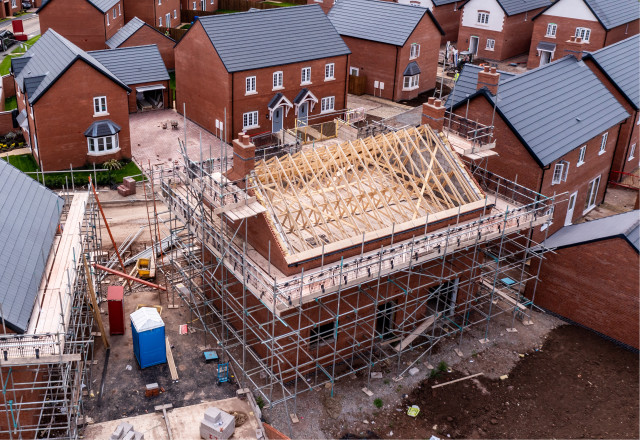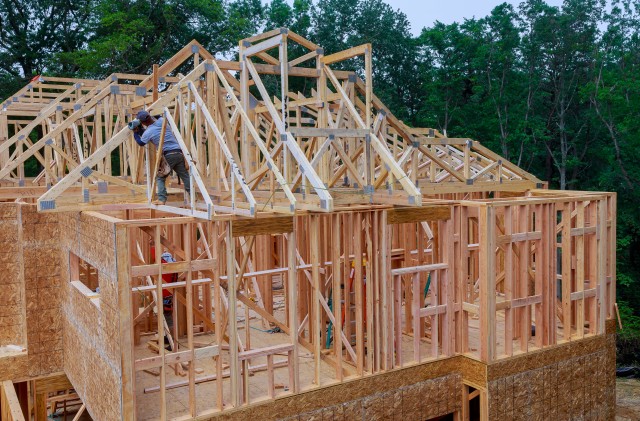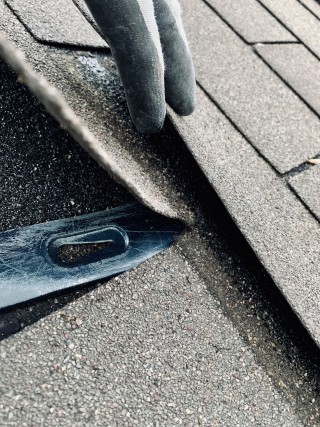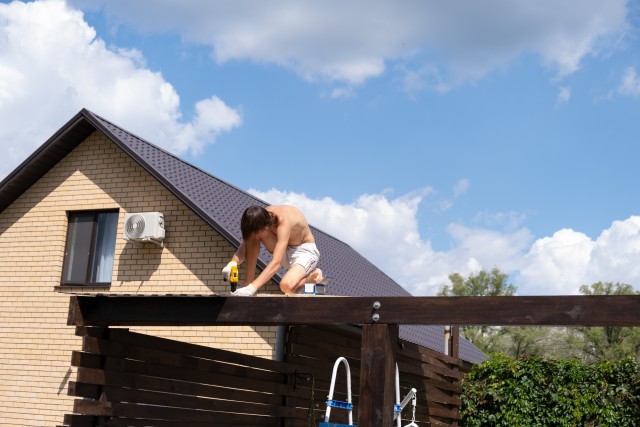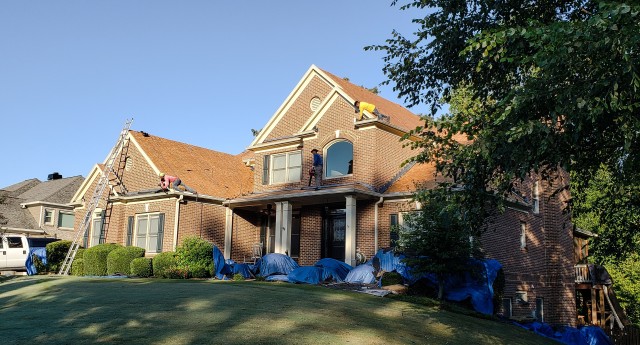Table of Contents
ToggleFundamentals of Roof Construction
Building a roof or Fundamentals of Roof Construction is one of the most important aspects of constructing a home or other structure. A good roof will not only protect the building and its occupants from the elements, but it can also add to the overall aesthetic appeal of the building. Knowing the fundamentals of roof construction is essential for anyone looking to build their own roof or hire someone else to do it. In this blog post, we’ll cover some of the basics of roof construction so you can make an informed decision when it comes time to build your own roof.
First, let’s talk about the materials used in roof construction. Most roofs are made from wood, asphalt shingles, or metal panels. Each material has its own benefits and drawbacks, so it’s important to choose one that best fits your needs and budget. Wood is more aesthetically pleasing than other materials but can be more expensive and may require more maintenance over time. Asphalt shingles are typically cheaper and easier to install, but they don’t last as long as other materials. Metal panels are stronger and longer-lasting than other materials but can be noisier when it rains or hails.
Next, we need to discuss the different types of roof designs that you can choose from. A gable roof is one of the most common and recognizable roof designs, consisting of two sloped sections that meet at a peak in the center. A hip roof has four sides that all slope downward to meet at the same point, creating a pyramid-like shape. Mansard roofs have two different slopes on each side, one steeper than the other, and are often used for commercial buildings or large residences. Finally, a flat roof typically consists of one layer of material with no slope, although it can also be built with two layers for extra protection from moisture and weathering.
Finally, let’s look at some tips for constructing your own roof. The most important thing to remember is to always follow local building codes when constructing any kind of roof. Make sure you use the right materials and tools for the job, as well as wear protective gear while working on your roof. Lastly, always double-check your measurements and calculations to make sure everything is level before moving forward with construction.
With these basics in mind, you should have a better understanding of the fundamentals of roof construction so you can start building your own roof or hire someone else to do it for you. Remember to always follow safety protocols when working on your roof and never work on anything that isn’t secure or stable.
Roofing material
Roofing material is an important part of any roof construction project. The right type of roofing material can help protect the structure from weather damage, as well as add to the overall aesthetics. Popular roofing materials include asphalt shingles, metal, wood shakes, and clay tiles.
Asphalt shingles are one of the most popular and widely used roofing materials due to their affordability and ease of installation. Asphalt shingles are made up of a fiberglass or organic mat that is coated with asphalt on both sides and then covered with ceramic granules. Asphalt shingles are ideal for residential roofs because they are lightweight, inexpensive, fire-resistant, and come in a variety of colors and styles.
Metal is another popular choice for roofing materials due to its durability and low maintenance requirements. Metal roofs typically consist of galvanized steel or aluminum sheets which can be painted in various colors to match the exterior design of the building. Metal roofs have the advantage of being more resistant to high winds than other materials such as asphalt shingles or wood shakes. Additionally, metal roofs can last up to 40 years with proper maintenance and care.
Wood shakes are a traditional form of roof covering that is still popular today due to their natural look and aesthetic appeal. Wood shakes are made from split logs that have been hand-cut or machine-sawn into thin strips that overlap each other during installation. Wood shakes offer superior protection against rain and wind but require more maintenance than other types of roofing material such as metal or asphalt shingles due to warping over time from moisture exposure.
Clay tiles have been used as a form of roof covering since ancient times because they provide excellent protection against rain, sun, hail, fire, and cold temperatures while adding a unique touch to any building’s exterior design. Clay tiles consist of flat pieces that interlock during installation creating a seamless surface across the entire roof surface area. Clay tile roofs require little maintenance but may be more expensive than other forms of roof covering due to their labor-intensive production process.
Asphalt shingles
Asphalt shingles are one of the most popular and widely used roofing materials due to their affordability and ease of installation. Asphalt shingles are made up of a fiberglass or organic mat that is coated with asphalt on both sides and then covered with ceramic granules. Asphalt shingles can be used in residential, commercial, and industrial roof construction projects. They are lightweight, durable, and fire-resistant, and come in a variety of colors and styles to suit any individual’s needs.
Asphalt shingle roofs are also cost-effective when compared to other forms of roofing material such as metal or clay tiles. The installation process is relatively simple for experienced contractors and the required maintenance is minimal. Also, asphalt shingles have a long lifespan; when properly installed they can last for up to 20 years before needing to be replaced. It is important to note however that the overall life expectancy of an asphalt shingle roof will depend on its location and climate as well as how well it has been maintained over time.
The benefits of asphalt shingle roofs extend beyond just their affordability; they provide excellent protection from weather-related damage such as wind, hail, rain, heat, cold temperatures, and more. Additionally, they provide energy efficiency since they help keep your home cooler in the summer months by reflecting heat away from the building structure. This helps reduce cooling costs significantly during hot weather months. Additionally, asphalt shingle roofs are also resistant to mold and algae growth which can further add to their lifespan if regularly maintained; this includes keeping them clear from debris such as leaves and branches which can cause water buildup on the surface thus leading to premature wear of the material over time.
Roofing construction
Roofing construction is an important part of any building project as it provides protection for the structure and its occupants from the elements. Common roofing materials used in construction projects include metal, wood shakes, clay tiles, and asphalt shingles. Each of these materials has different properties that make them suitable for certain applications and locations.
Metal roofs are becoming increasingly popular due to their durability and energy efficiency. They tIn addition to these materials, there is also a wide range of tools and equipment used in roof construction such as hammers, saws, drills, ladders, safety harnesses, scaffolding, tarps, and more. Roofers must also be knowledgeable about building codes and regulations related to roof construction as failure to comply can result in costly fines or even complete demolition of the structure. Proper installation techniques must also be followed in order to ensure a safe and secure roofing system that will last for years to come.
For more complex projects such as steep-slope roofs or long-span roofs where extra reinforcement is required, specialized engineering services may be necessary to ensure that the system meets all safety requirements. For instance, hip roofs or gable roofs require additional support beams which must be designed by an engineer prior to the start of construction in order to prevent structural collapse under heavy loads such as snow or wind gusts.
Finally, proper ventilation is essential for a long-lasting roof which is why contractors need to consider airflow when designing a roofing system. This includes ensuring that eaves are installed correctly so that hot air can escape through high vents while cold air enters through lower vents. Without sufficient airflow the attic space could become too hot during summer months resulting in damage to the building materials over time.

